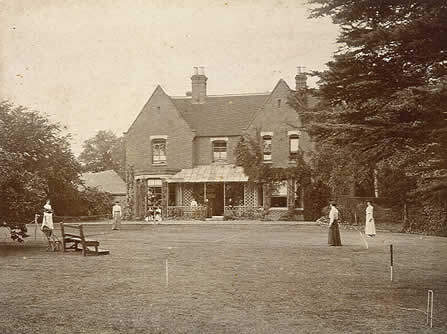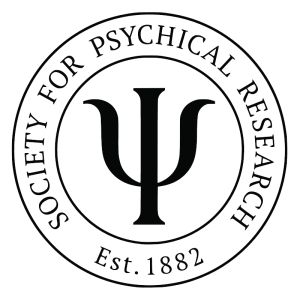There are many, many demon houses in America – from the hauntings of Amityville to Georgia to Connecticut and every state in between. But there’s another Gothic-style home that came far before any of these famous hauntings – across the pond and described as “the most haunted house in England” by famed psychic researcher Harry Price. Yes, we’re talking about Borley Rectory. Built in 1862 and demolished in 1944, there were claims of paranormal activity within the house for many decades – from owners, paranormal experts, visitors and more for many decades after the house was destroyed. Sure, there were a few skeptics… but what haunting legend doesn’t have its haters? Read on to learn more about Borley Rectory and the horror it bestowed upon Britain many years ago.
The Reverend
Quite a few hauntings around demon houses involve religion, whether it’s regarding a nun spirit (wait for it) or the priest who is forced to come in and perform an exorcism on the property. The difference with Borley Rectory, however, is that it was made specifically for Reverend Henry Dawson Ellis Bull to live in after becoming rector of the parish. The manor was built after the previous rectory had burned to the ground just one year prior… and immediately became a source of gossip for the townspeople. Partly for the gothic exterior that stood out in a rural suburban town, and partly for the spirits that were seen wandering the grounds throughout the years.

Reverend Henry Dawson Ellis Bull lived there with his fourteen children until his death in 1892, and those three decades were supposedly filled with all types of paranormal activity and unexplained events – a claim which would be supported by later owners. His daughters were the first ones who claimed to see the ghostly nun – which would become one of the most prominent spiritual figures within the home and an apparition seen by many people of Borley. Despite these claims of ghostly activity, the Bull family owned the house until 1927 when the Reverend’s eldest son died. That’s when Reverend Guy Eric Smith and his wife moved in and began to ask questions that the Bulls never had.
Society for Psychical Research

When you find the skull of a young woman in one of the cupboards of your new house, like the Smiths did, it’s likely that you’d have a few questions. Especially since the paranormal activity at Borley Rectory reached a peak right after this discovery of human remains. The couple apparently saw a headless horseman pulling the carriage while they heard unexplained footsteps and servant bells ringing… which prompted them to contact The Daily Mirror and plead for contact with the Society for Psychical Research (SPR). That’s how the Smiths met Harry Price, the famed paranormal investigator who would later call Borley Rectory “the most haunted house in England.”
Price’s presence in the house only upset the spirits, and his report of terrifying experiences at Borley Rectory included objects being thrown and “spirit messages” in the mirror. As could be expected, this phenomena came to a halt shortly after Price left the house. While the investigator had many skeptics who doubted his claims of paranormal activity at the house, including Mrs. Smith herself, his experiences captured the attention of people far outside of Borley and contributed to the house’s infamy. It’s also worth noting that many other paranormal investigators over the years, including famed ghosthunters Ed and Lorraine Warren, supported the idea of frightening phenomena within Borley Rectory.
The Smiths stayed in the house for only a couple years, being replaced by Reverend Lionel Algernon Foyster and his wife Marianne in 1929. This family reported far more frightening events than those before them – including being locked in rooms, threatening mirror messages, and being violently thrown from the bed. The Reverend compiled an entire report of paranormal phenomena that they experienced during their time at Borley Rectory, which caused Harry Prince to circle back around and become even more interested in the house. While he failed to exorcise the property on two occasions, he drew enormous attention to Borley Rectory and inspired many ghosthunters and mediums to attend and study the ghosts within the walls. How popular was this home in the city of Essex, exactly? Let this quote from The Daily Mirror tell you.

“The rectory continues to receive the unwelcome attention of hundreds of curious people, and at night the headlights of their cars may be seen for miles around. One ‘enterprising’ firm even ran a motor coach to the Rectory, inviting the public ‘to come and see the Borley Ghost’, while cases of rowdyism were frequent.’”
The Spirits
After the Foysters left Borley Rectory in 1935, Price would move in and spend years experimenting with the paranormal phenomena in the house. He held seances, hired psychics, and recorded instances with meticulous detail to uncover the history of the house. The closest he got was one instance in 1938, in which medium Helen Glanville was reported as having made successful contact with a nun and an unidentified male spirit. The man even predicted that the Borley Rectory would be destroyed in a fire in March of that year. Spoiler alert: he was right.
Despite the fire badly damaging the house and the entire demolition of the property in 1944, there has been continued interest in the ghostly activity within Borley Rectory. Both from Harry Prince and the many ghost hunters that came after him. What’s the deal with the nun, and why exactly did the Foysters experience more terror than any other family?
There are plenty of books, movies and mini-series that you can check out for answers, as you become immersed in the mystery of Borley Rectory.
Books
- The Most Haunted House in England: Ten Years Investigation of Borley Rectory
- Borley Rectory Companion: The Complete Guide to ‘The Most Haunted House in England
- The End of Borley Rectory
- World of the Unknown: Ghosts
- The Ghosts of Borley: Illustrated Edition
Films
Borley Rectory horror film 2017

The Haunting of the Borely Rectory 2019

The Banishing Coming 2021

I am a lifelong pop culture junkie with immense passion for all forms of art and entertainment. On a typical weekend, I can be found at a concert or musical, chasing ghosts on the Haunted Mansion at Disneyland, or watching way too many makeup tutorials on YouTube.
